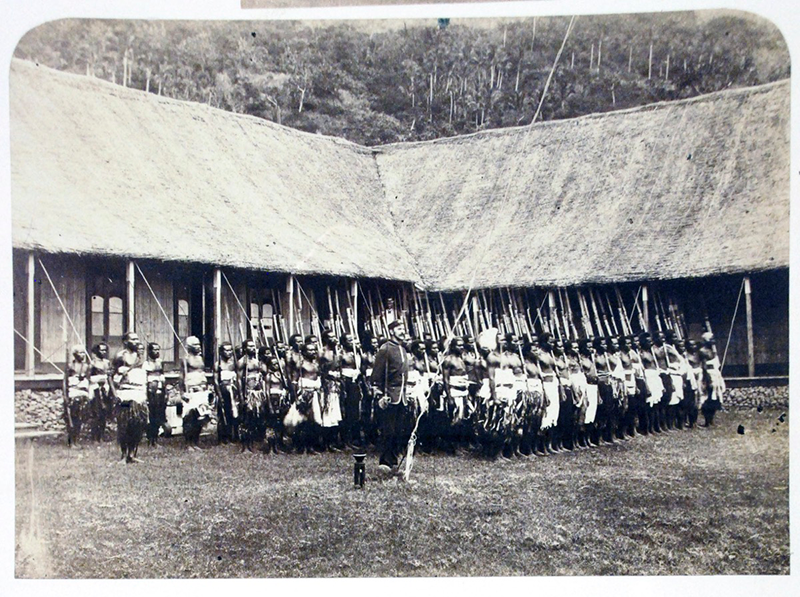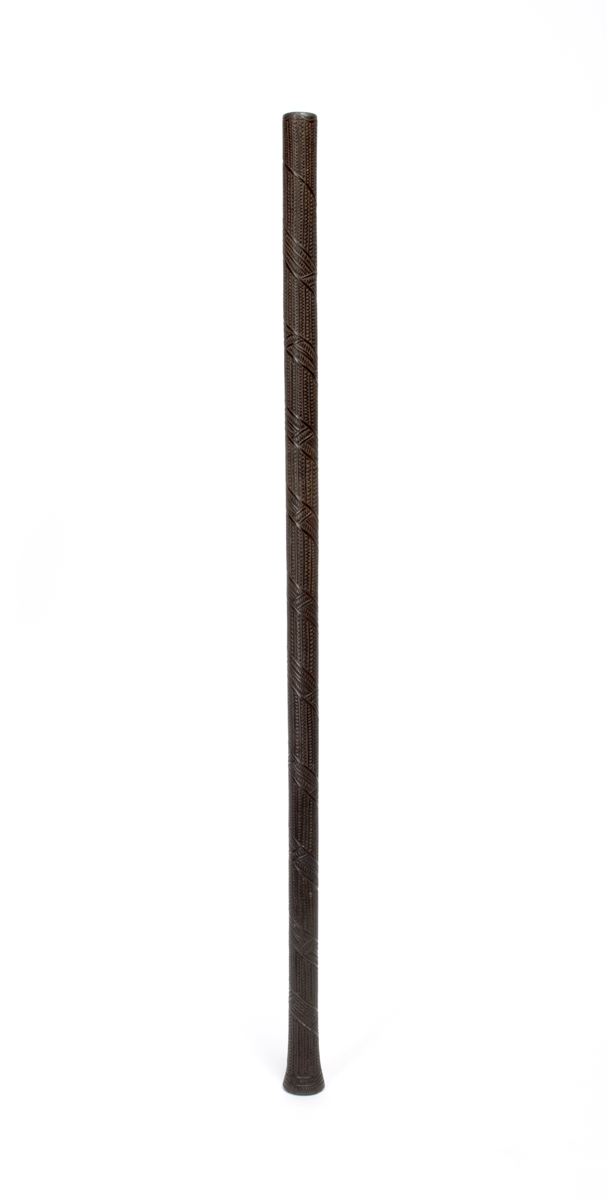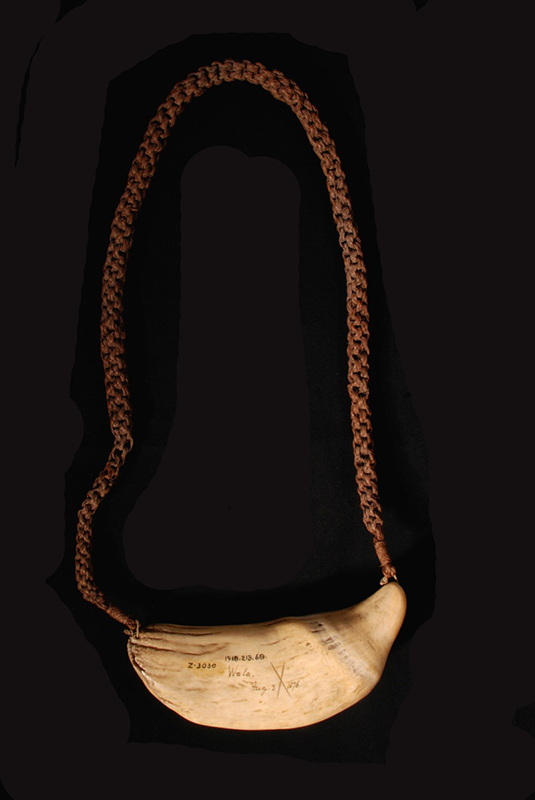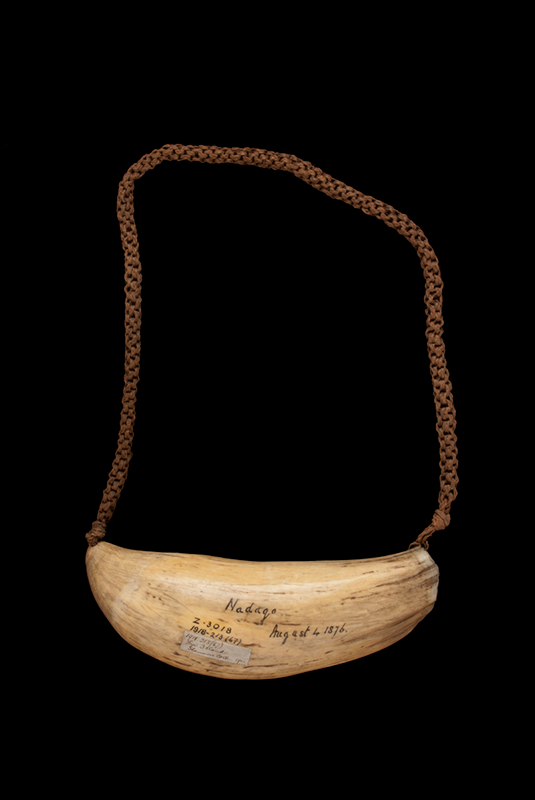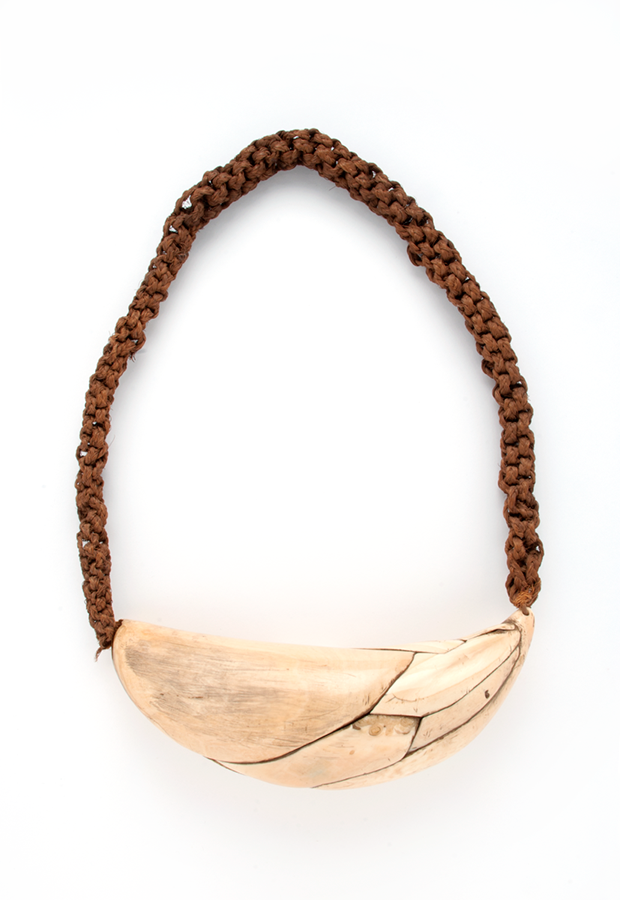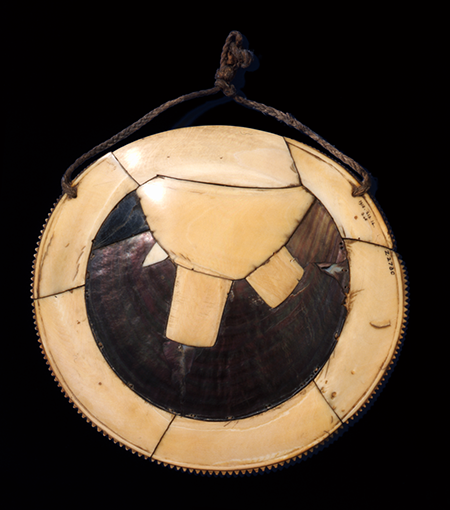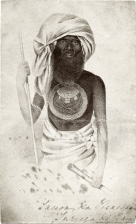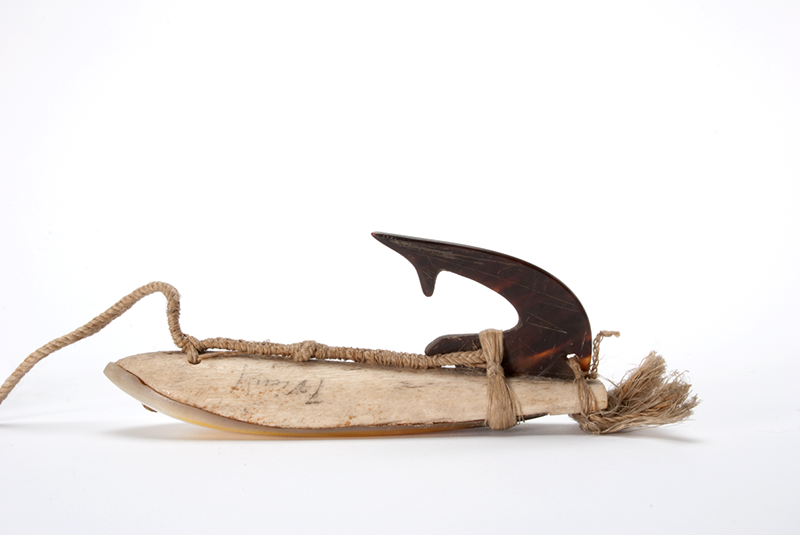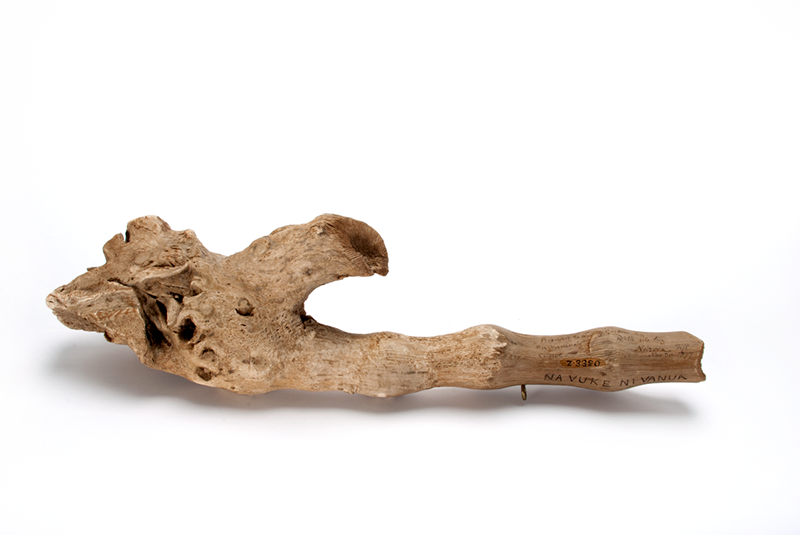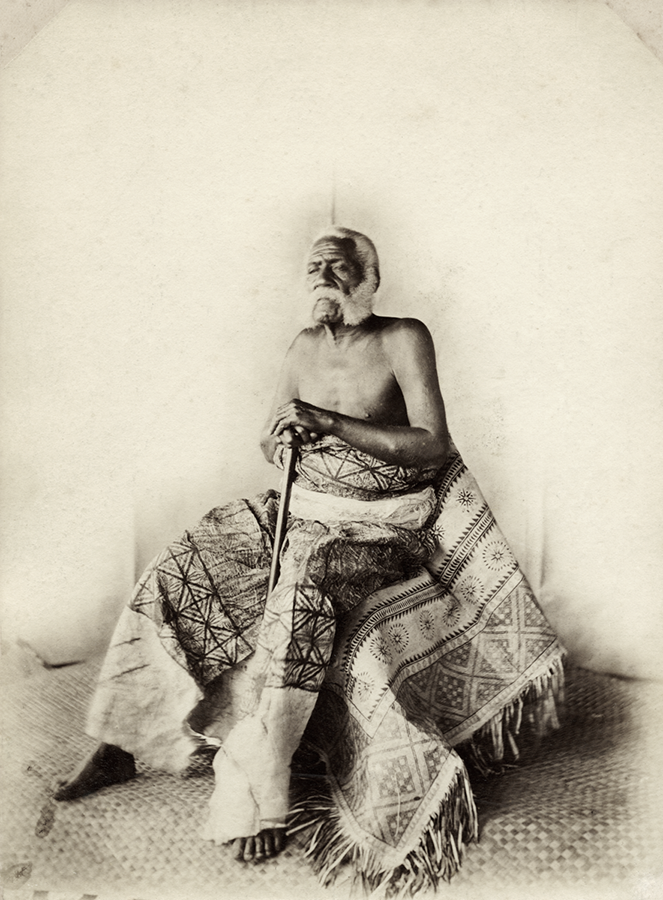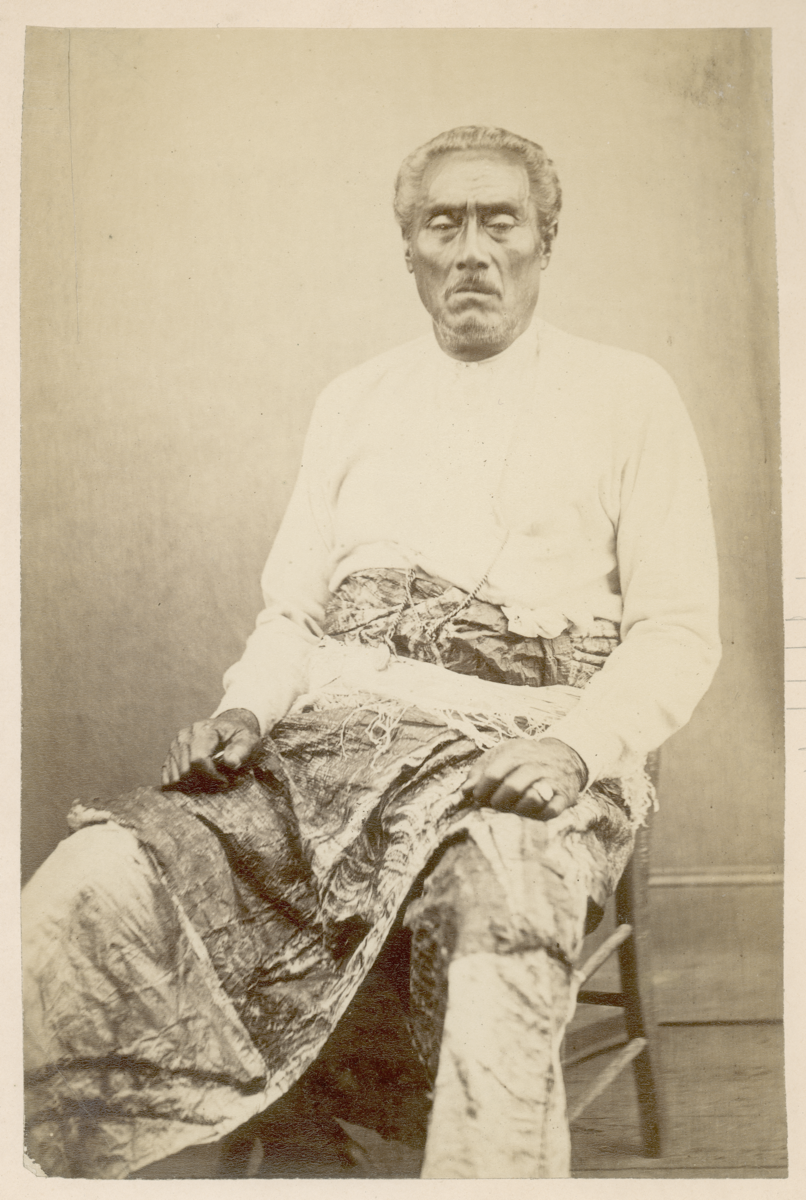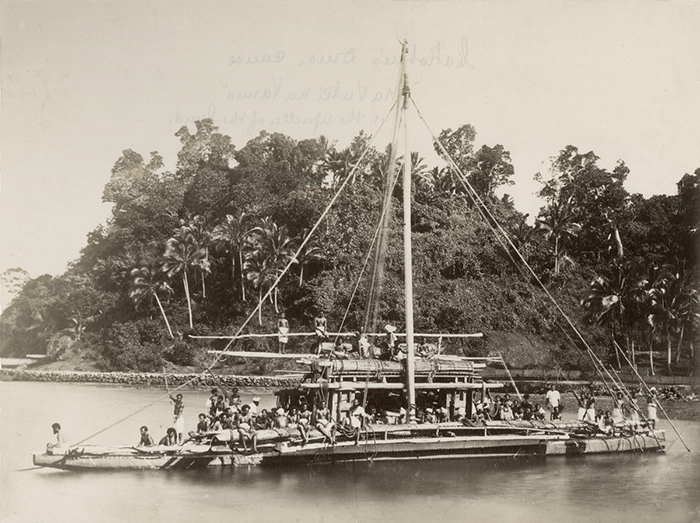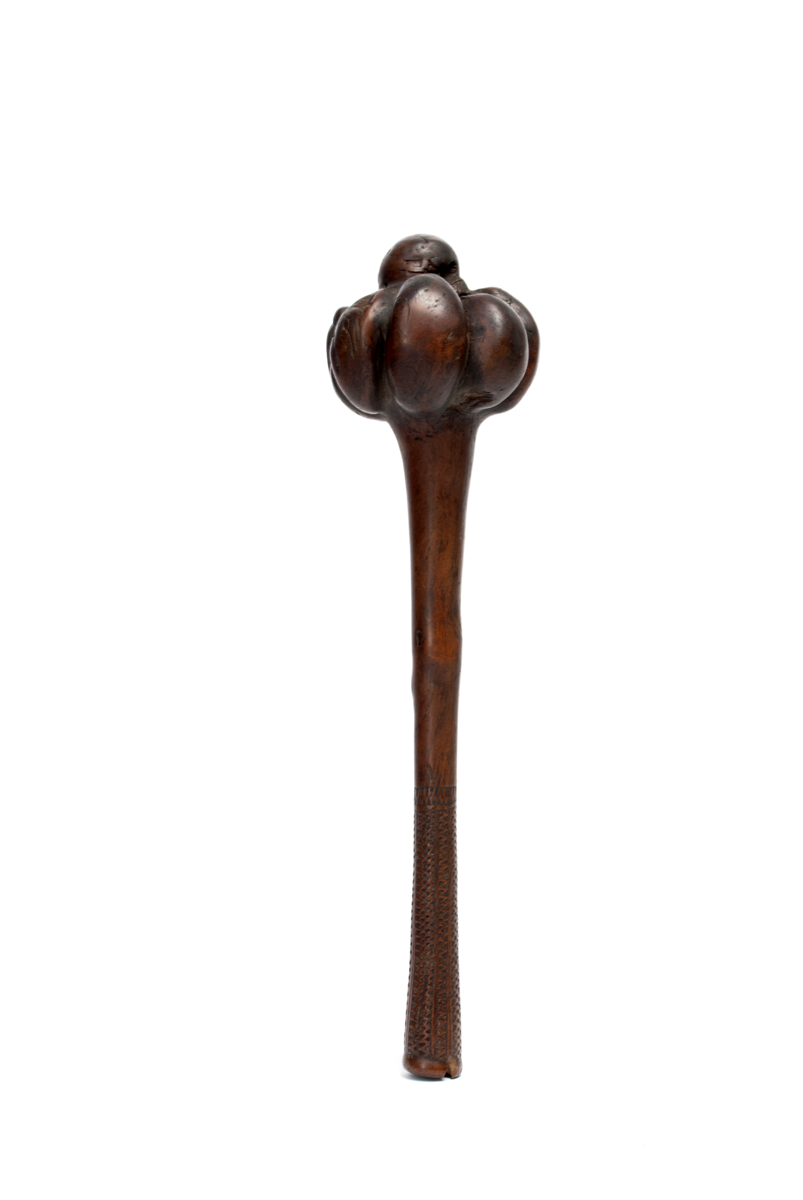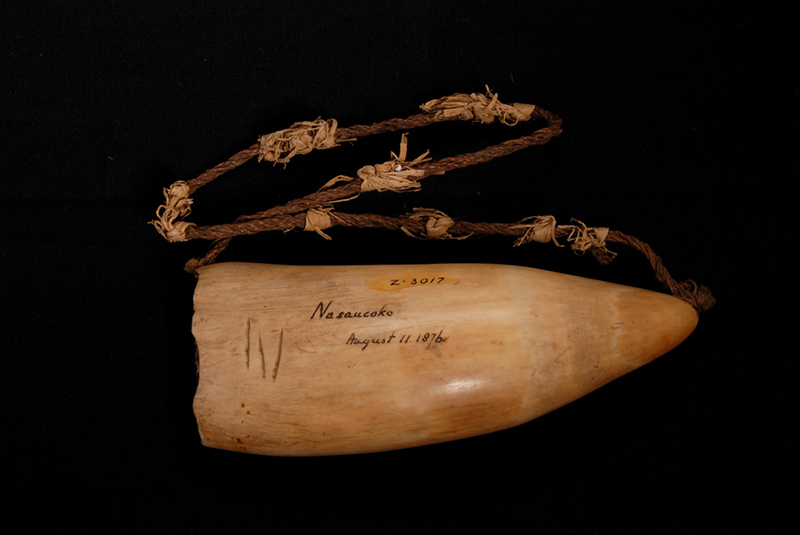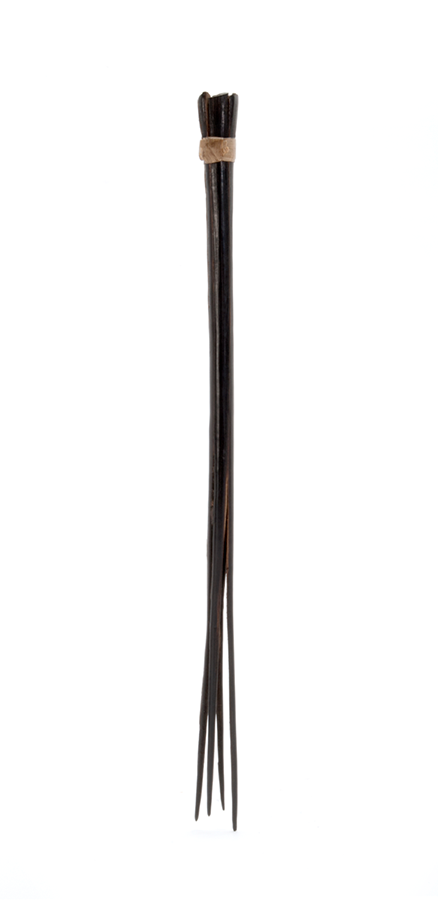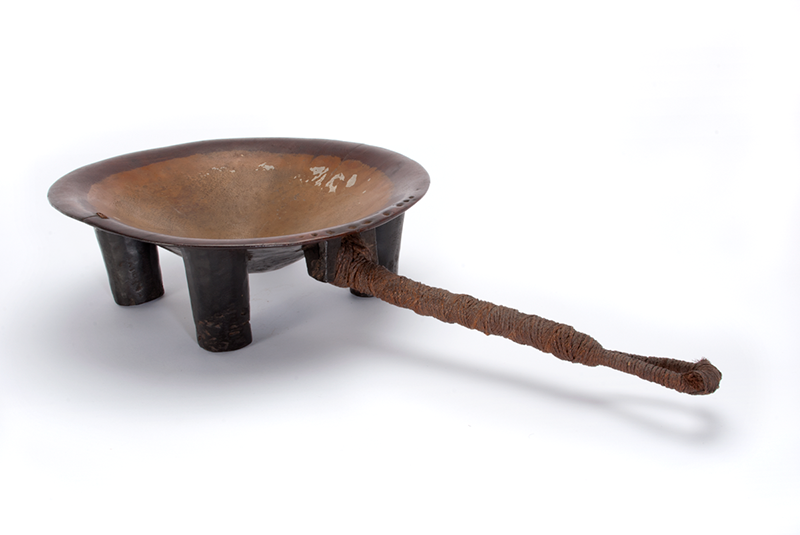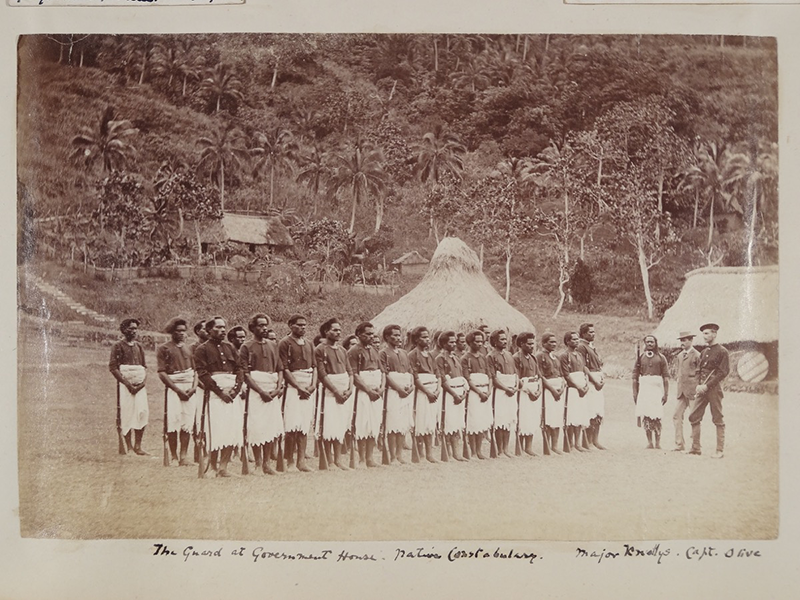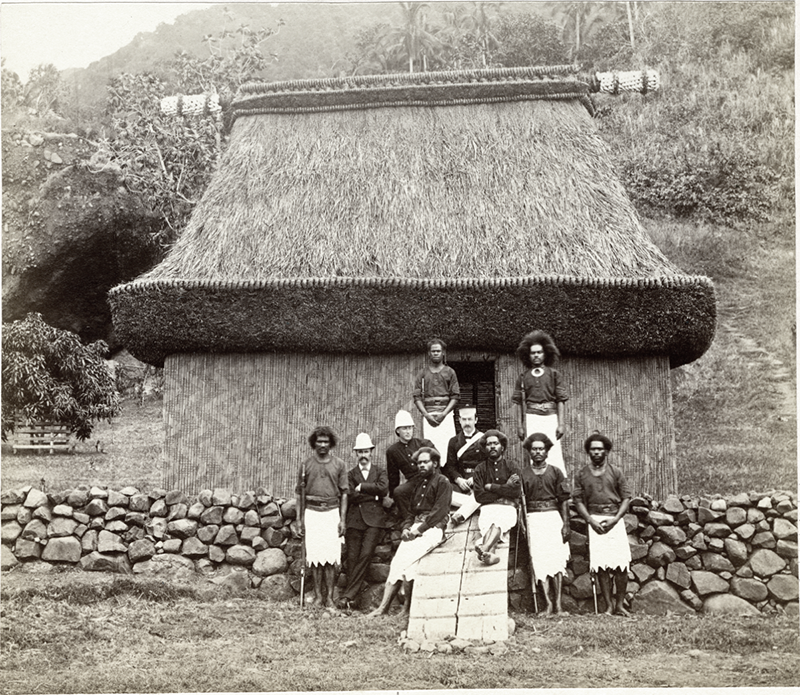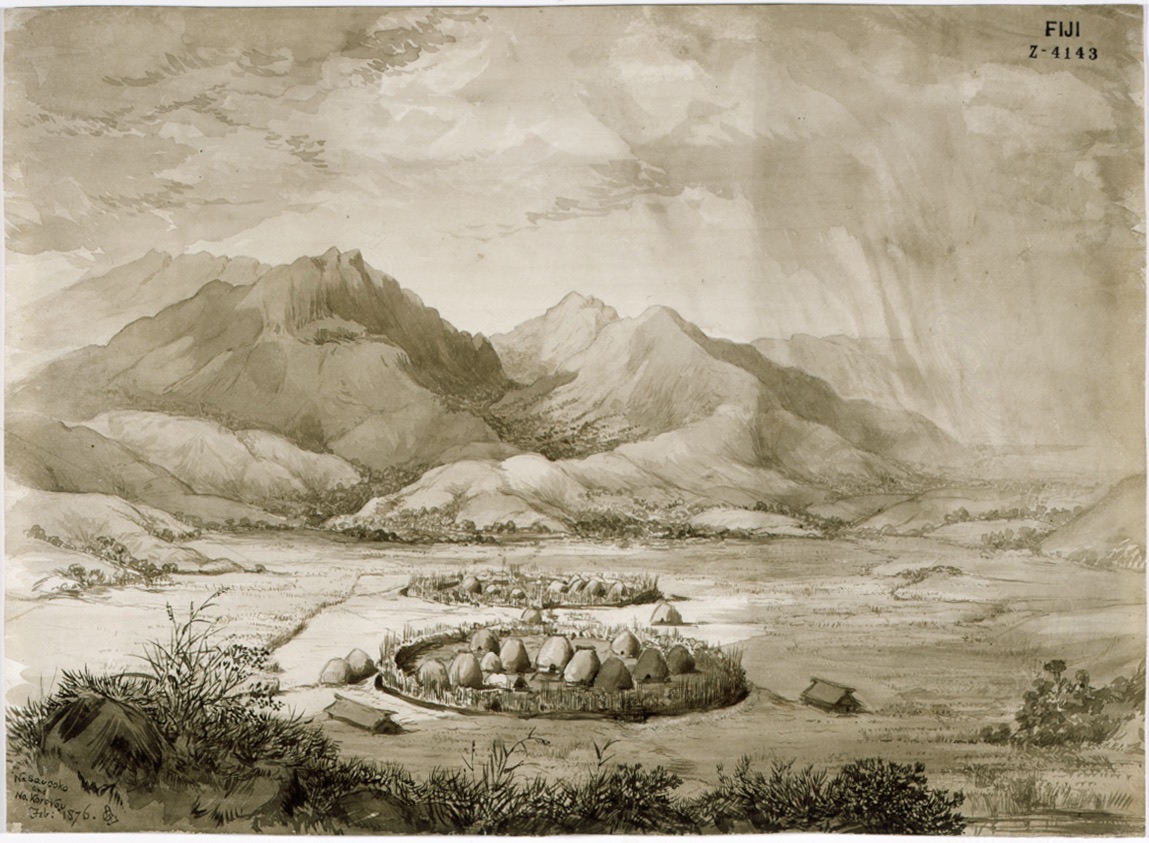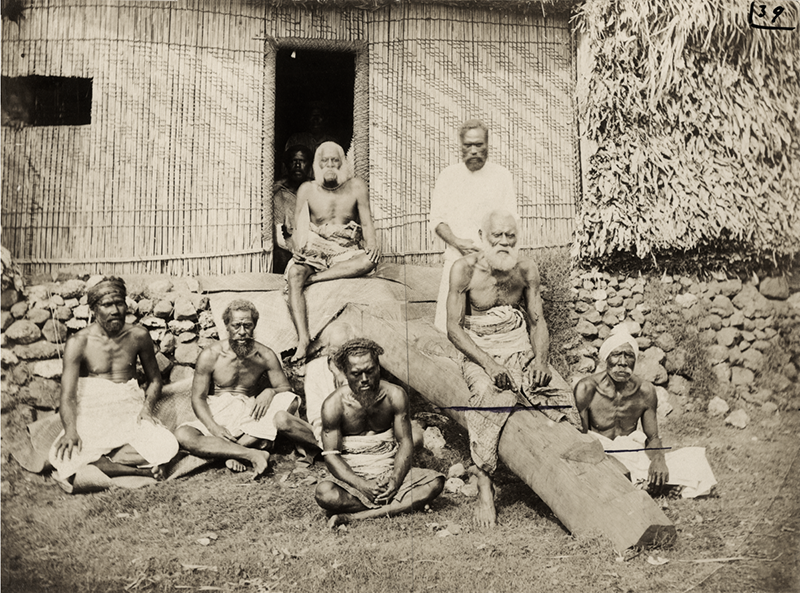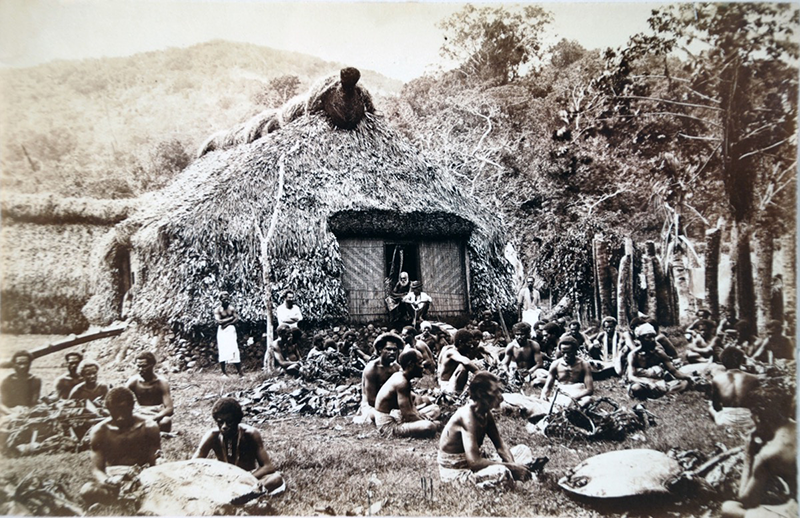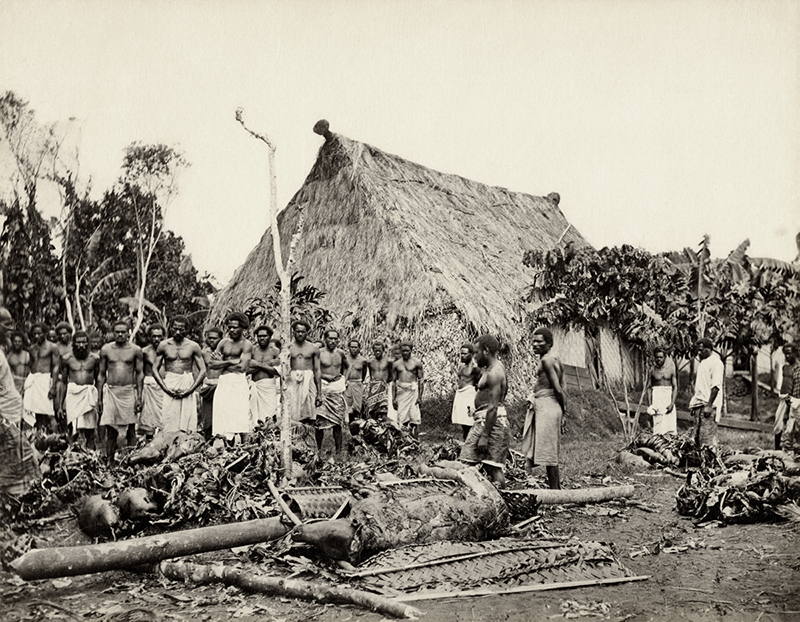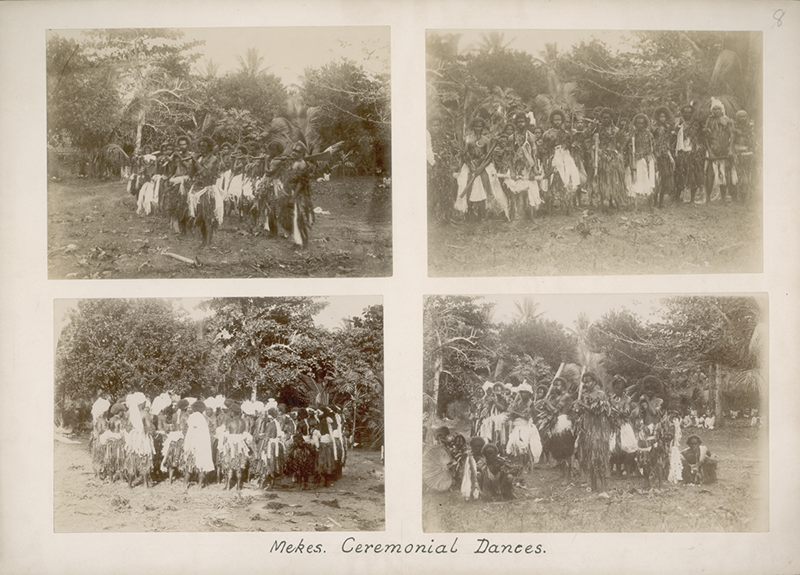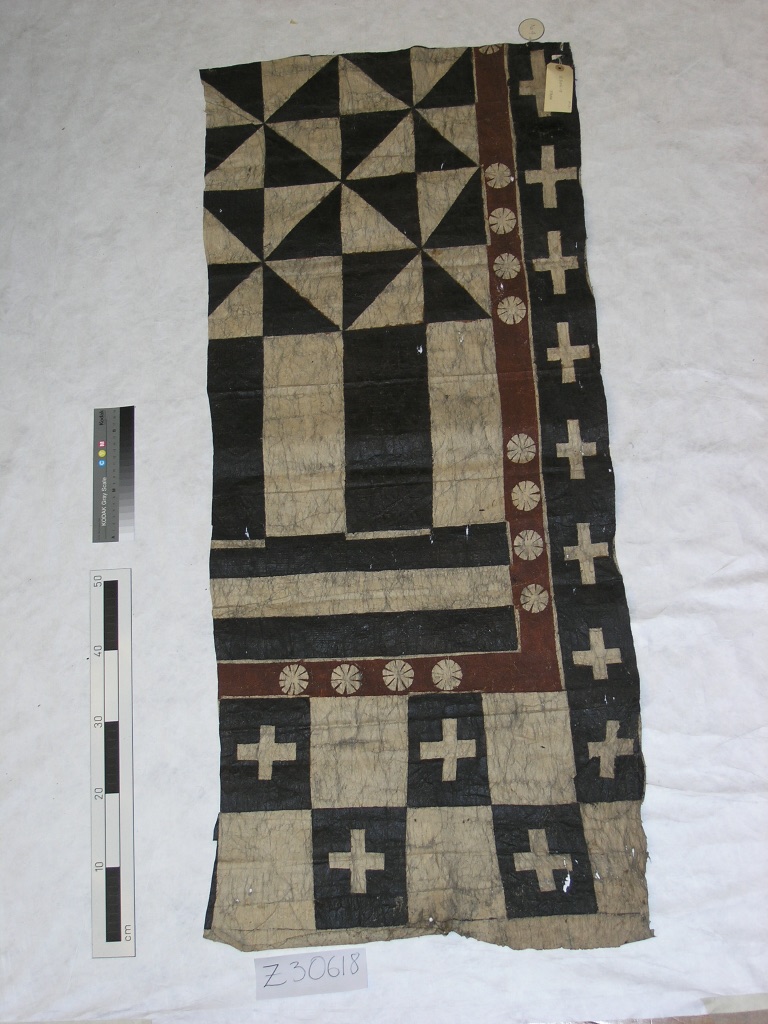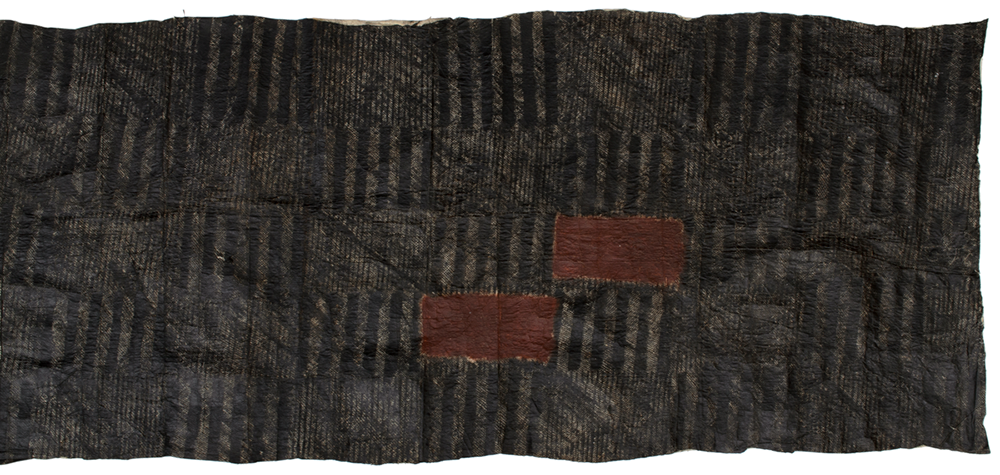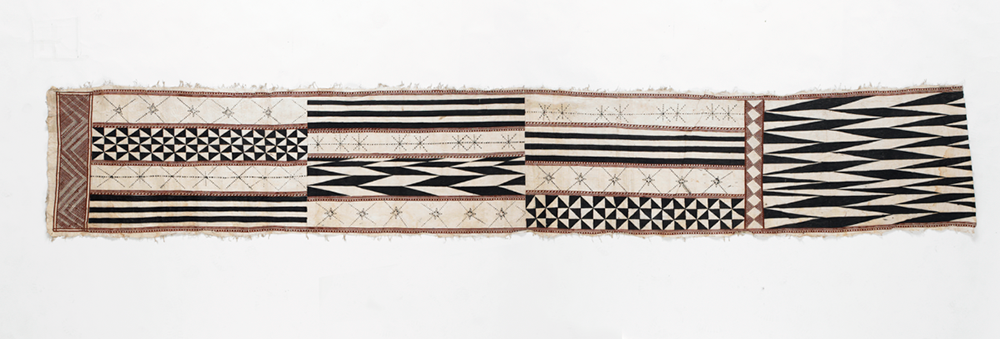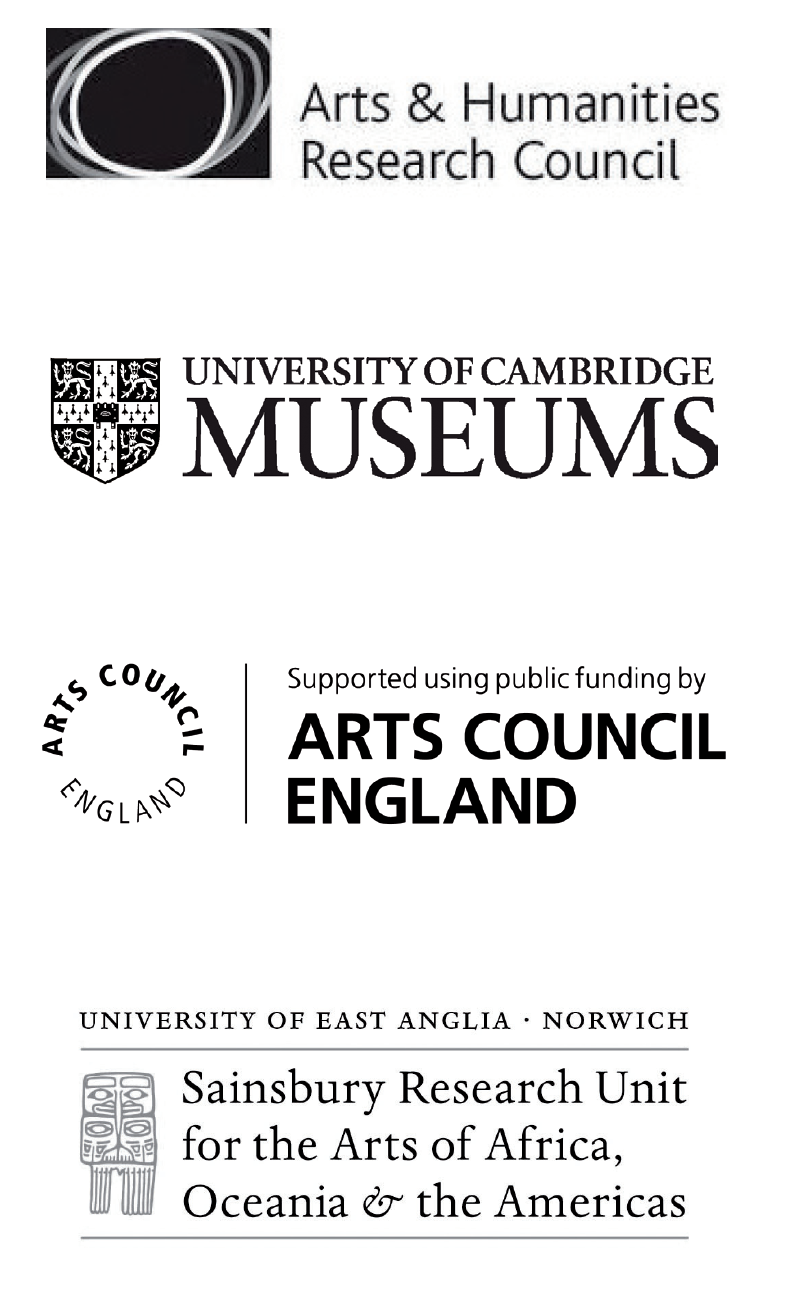On 10 October 1874 thirteen leading chiefs signed the Deed of Cession. Sir Arthur Hamilton-Gordon was appointed the first Governor of Fiji (1875-1880). The histories of Fiji, British colonialism, and Cambridge became intertwined.
Gordon's core administrative team included his Private Secretaries - Alfred Maudslay, George Le Hunte and his nepher Arther J.L. Gordon - as well as a group of Royal Engineers sent from Britain. He was supported by established British settlers and the Armed Native Constabulary.
MAA's rich collections provide a detailed and nuanced account of complex interactions between chiefs and governors, high-ranking British and Fijian families, and local residents. The presentation of valued objects consolidated relationships and alliances. As the personal representative of Queen Victoria, Governor Gordon was treated as a paramount chief. The members of Government House also selectively adopted Fijian protocols.
The swearing-in of Governor Gordon with the Armed Native Constabulary at Government House. Photographed by F. Dufty, 1 September 1875. Nasova, Ovalau Island, Fiji. P.99734.VH
The challenges of establishing a new colonial order and reconciling the divisions within and between Fijian and settler communities were epitomized by two key poltiical events in 1876. Gordon's 'Little War' asserted the authority of the colonial government throughout Fiji. The meeting of the Great Council of Chiefs at Waikava aided Gordon's plans for indirect rule and the protection of Fijian land rights.
The growing number of British settlers was largely dependent on native plantation labourers. Partly to protect Fijians, Gordon instigated plans in 1879 to bring indentured labour from India. This controversial policy had far-reaching economic and social consequences, evident in the demography and politics of Fiji today.
Use the drop down menu below to explore the themes and objects in this section.
Highly valued objects were presented by leading Fijian chiefs to British governors. Many of the outstanding objects on display in this case were presented to Governor Gordon, Lady Gordon and officials in the colonial government. These gifts mediated relationships and consolidated alliances. They also demonstrated the power and authority of the chiefs.
Club, Gadi
The surface is carved with zigzag patterns (tavatava). This club was passed down from Tanoa Visawaqa to his son Cakobau, who later presented it to the Governor’s Private Secretary, Alfred Maudslay. Prior to working with Sir Arthur Gordon in Fiji, Maudslay had been Private Secretary to the Governor of Trinidad, William Cairns.
Fiji. Presented by Cakobau to A. Maudslay, 1876. Z 3281
Tabua
Presentation whale teeth attached to cords of plaited coir. Numerous tabua were gifted to Governor Gordon, some inscribed with the date and place of their presentation. These tabua are marked ‘Wala Aug. 3 1876’ and ‘Nadago Aug. 4 1876’ indicating their association with Gordon’s ‘Little War’.
Wala and Nadago, western Viti Levu, Fiji. Presented to Sir A. Gordon, 3 & 4 August 1876. 1918.213.68 & 1918.213.67
This extraordinary tabua is composed of nine pieces of whale tooth suspended from a plaited coir cord. The hidden binding technique by which it was assembled was probably the work of expert Samoan-Tongan canoe-builders resident in Fiji. It was presented to John Thurston, who served in the governments led by Cakobau and Sir Arthur Gordon, and was Governor of Fiji from 1888-1897.
Naitasiri Province, Fiji. Presented by Ratu Peni Tanoa to Sir J. B. Thurston before 1897. 1936.380
Breastplate, Civavonovono
Plates of whale ivory and a black-lipped pearl shell expertly bound together so that the binding is concealed from the front. The technology of its construction points to the skills developed by 19th-century Tongan and Samoan canoe-builders working in the service of Fijian chiefs. It belonged to Tanoa Visawaqa and probably passed down to his son Cakobau before being given to the first Governor of Fiji.
Fiji. Presented to Sir A. Gordon, 1875-80. Z 2730
Tanoa, King of Ambau. 1840.
Engraving by Rawdon, Wright and Hatch after an 1840 drawing by Alfred Agate, a member of the Wilkes United States Exploring Expedition to the Pacific (1838-1842). Tanoa Visawaqa, the Vunivalu of Bau and Cakobau’s father, is shown wearing the breastplate on display here. Tanoa’s high status is also shown by his shell armlets and white masi turban and waistcloth.
Fishhook, Bayaloyalo
Fishhook of Tongan origin, composed of whale bone, pearl shell and turtle shell with a fibre line. Presented to Governor Gordon by the Tongan chief Ma’afu with these words:
You have got the land. I bring you the water, as land without water is useless. Here it is with all the fish and living creatures in it.
Originally from Tonga. Presented by Ma’afu to Sir A. Gordon, 1875, Draiba, Ovalau Island, Fiji. Z 3322
Yaqona Root, Waka
Yaqona is typically used in presentations to chiefs and other high-ranking people. This large yaqona root was presented to Lady Gordon alongside a tabua and the large double-hulled canoe named Navukinivanua shown in the photograph beside this case.
Nasova, Ovalau Island, Fiji. Presented by Cakobau to Lady Gordon, 20 November 1877. Z 3320
Governor Gordon worked closely with powerful chiefs, particularly Cakobau and Ma’afu. As the representative of Queen Victoria, Gordon was often treated as the paramount chief.
Cakobau
Cakobau, the Vunivalu of Bau and former Tui Viti (King of Fiji). Photographed by Captain R. Stewart, 1876. P.103551.VH
Ma'afu
Ma’afuotu’itonga, the Tongan chief and Tui Lau who controlled parts of Eastern Fiji from his base on Vanua Balavu. Photographed by Captain R. Stewart, 1876. P.103552.VH
Governor Gordon
Carte-de-visite of Sir Arthur Hamilton-Gordon, first Governor of Fiji (1875-1880). Gordon’s previous positions included Lieutenant-Governor of New Brunswick (1861-1866), Governor of Trinidad (1866-1870) and Governor of Mauritius (1871-1874). Photographer unknown. P.98977.GCUM
One of the last great drua, named Navukinivanua (the turner of the land), probably in reference to the shift to colonial rule. Over 30 metres in length it has more than 100 people on board, including members of Cakobau’s family and his retainers. Its presentation by Cakobau to Lady Gordon did not indicate the transfer of exclusive ownership but was intended as a means of promoting ongoing relationships.
Cakobau landed, and Rachael [Lady Gordon], accompanied by Wilkinson, met him at the door of the dining-room and accepted the symbolic whale’s teeth. Then she offered her whales tooth, and begged him to “take care of the canoe for her, and use it.” He accepted the symbol, and she then sent a present of cloth, etc., on board for the crew.
- Sir Arthur Gordon’s notes, November 1877.
Nasova, Ovalau Island, Fiji. Presented to Lady Gordon by Cakobau, 20 November 1877. P.99803.VH
Throwing club, iUla tavatava
Throwing club of dark wood. Some traces of blue pigment are visible at the top. Presented by Ratu Timoci Tavanavanua, Cakobau’s son.
Fiji. Given by Ratu Timoci Tavanavanua to Captain R. W. Stewart, c. 1875. 1937.323
Tabua
Inscribed with ‘Nasaucoko August 11 1876’. Several tabua were presented to Governor Gordon towards the end of the Little War, each marked with its place of origin and date of presentation. They likely represented newly forged alliances or renewed loyalties.
Nasaucoko, Viti Levu, Fiji. Collected by Sir A. Gordon, 11 August 1876. Z 3017
Flesh fork
Four pieces of tree fern wood secured with a strip of pandanus leaf. Probably seized as part of military operations during the Little War.
Nacaivanisa Caves, Nasogovatu, Wainibuka River, Viti Levu, Fiji. Collected by Captain L. Knollys, 30 July 1876. Z 3007
Yaqona bowl, Tanoa
Carved from vesi wood with a handle of finely plaited coir. The nine burnt marks branded into the rim commemorate former keepers and suggest an 18th century provenance. Probably seized as part of military operations during the Little War.
Nadrau Caves, Viti Levu, Fiji. Collected by Captain L. Knollys, August 1876. Z 3424
Members of the Armed Native Constabulary standing at ease in the grounds of Government House. The men are wearing government-issue white isulu skirts. They are awaiting inspection by the Governor’s aide-de-camp Captain L. Knollys and Lieutenant Olive, on secondment from the Royal Marines.
Nasova, Ovalau Island, Fiji. Photographed by F. Dufty, 1875. P.98961.GCUM
Lieutenant Olive seated on the ramp leading up to the doorway of his quarters, alongside Fijian sentries and two Europeans. The building is symbolic of high status and authority, built on a raised yavu mound faced with stones, with a high roof and projecting ridgepole wrapped with white cowrie shells.
Nasova or Waitovu barracks, Ovalau Island, Fiji. Photographed by F. Dufty, c 1875. P.99785.VH
Pen and ink drawing depicting the fortified villages of Nasaucoko and Nakorovou, in the interior of western Viti Levu. These neighbouring villages were strategically positioned and later transformed into a military camp for Governor Gordon during the Little War rebellion.
Sepia painting illustrating the villages of Nasaucoko and Nakorovou, by Arthur J. L. Gordon, 1876. Z 4143
The Great Council of Chiefs meeting at Waikava was opened by Governor Gordon on 20 November 1876 and lasted nearly 3 weeks. Gordon outlined his plans for indirect rule and established procedures for future meetings. Numerous resolutions were adopted and at the end of the meeting a letter to the British Queen was signed by the principal chiefs. Various people came to the climax of the meeting which included a feast, dancing and a solevu.
Photographs:
All: Waikava, Vanua Levu, Fiji. Possibly photographed by F. Dufty, December 1876.
Senior members of the Great Council of Chiefs with Cakobau seated at the top of the ramp above his brother Ratu Josefa Celua. The chief to his left, wearing a white masi turban is likely Musudroka, the Vunivalu of Rewa. P.99842.VH
Partly butchered turtles presented before a chief’s house. P.87254.VH
Whole pigs cooked in the lovo, or earth oven. P.99727.VH
Various meke performed at the Great Council of Chiefs Meeting. P.99738.VH – P.99741.VH
"After he [Tui Cakau] had made a speech of welcome, and presented some whale’s teeth, the train was dropped… Many other chiefs went through the same ceremony according to their rank: the pile of masi left at the end was enormous. Then a great roll of masi covered with mats was presented. It took about a hundred men to carry it… Of course all these presents were afterwards divided up, and given to the visitors, who had some of them come long distances to attend the Council."
Alfred Maudslay, Life in the Pacific Fifty Years Ago, 1930.
Barkcloth, Masikesa
Section from an enormous piece of masi which formed part of the 90 metre long train of Tui Cakau at the Great Council of Chiefs at Waikava. MAA’s collections include a much larger section of the original piece (Z 3862), used as a wall decoration in Government House. It is made in the Cakaudrove-style, typical of the island of Taveuni. The crosses in the borders may symbolise Tui Cakau’s conversion to Christianity.
Waikava, Vanua Levu, Fiji. Presented by Tui Cakau to Sir A. Gordon, 12 December 1876. Z 30618
Barkcloth, Masikesa
This barkcloth was probably made in the Yasayasamoala Group located between Viti Levu and the southern Lau Islands. The elongated designs and intricate stencilling are characteristic of the area, specifically of the islands of Moala and Matuku. This cloth was collected by Lieutenant Henry Olive, Commander of the Armed Native Constabulary and close friend of von Hügel.
Yasayasamoala, Fiji. Collected by Lieutenant H. Olive, 1870s. Z 30734
Barkcloth, Masi
This type of barkcloth decorated with dark motifs applied with a bamboo roller is typical of the interior of Viti Levu. It was probably worn by chiefs as a malo or loin-cloth. This piece was seized in Nadrau by Fijian auxiliaries operating under the command of Captain Louis Knollys during the period of unrest known as the ‘Little War’.
Nadrau, Viti Levu, Fiji. Probably collected July-August 1876. Z 30477
Barkcloth, Masi
The bold black and white trapezoid designs on this piece of barkcloth (cut from an even longer piece) are typical of the Cakaudrove region of Taveuni Island and easter Vanua Levu. It may have been worn as a ceremonial loincloth, malo.
Cakaudrove, north-eastern Fiji. Probably collected in the 1870s. Z 30621


